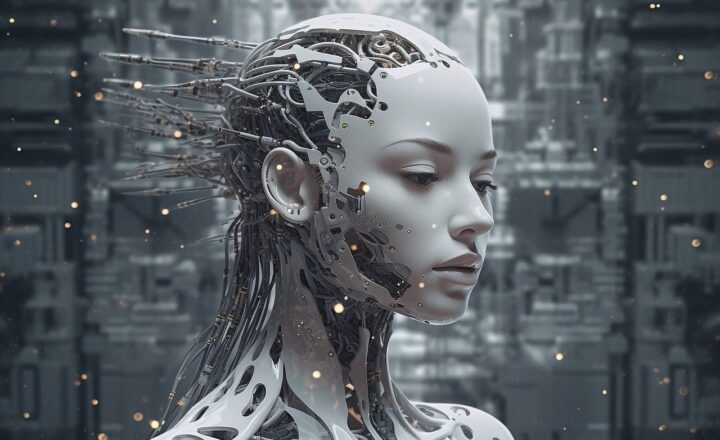Understanding the Limitations of AI: Why Machines Can’t (Yet) Replace Humans
November 10, 2024

Artificial Intelligence (AI) has made tremendous strides in recent years, drastically changing how industries operate and interact with customers. From chatbots providing 24/7 assistance to sophisticated language models generating human-like text, it’s clear that AI is transforming our world. However, for all its advances, a critical question lingers: can machines replace human intelligence and creativity?
In this article, we will delve into the limitations of AI and explain why, despite its capabilities, machines cannot wholly replace humans just yet.
1. The Nature of Human Intelligence
Human intelligence is not a singular entity; it includes a myriad of cognitive, emotional, and social factors that machines simply cannot replicate. Unlike AI, humans possess the ability to understand context, emotional nuances, and cultural references, making our interactions richer and more meaningful.
For instance, consider a job interview scenario. A human interviewer can gauge a candidate’s responses not only through their words but also by observing body language, tone of voice, and emotional cues. AI lacks the capability to interpret these subtleties fully, limiting its effectiveness in personal interactions.
2. The Importance of Empathy and Emotional Intelligence
Empathy is a fundamental human trait that plays a crucial role in building relationships and understanding others. While AI can analyze data to make decisions, it cannot empathize or feel. This emotional intelligence is vital in professions such as healthcare, counseling, and education, where human connection is necessary for success.
Studies show that patients respond better to healthcare professionals who exhibit empathy and understanding. Robots and AI, regardless of how well they can simulate human-like responses, still lack the genuine emotional connection that comes from humans.
3. Creativity and Innovation: The Human Edge
One of the most significant limitations of AI is its inability to create genuinely novel ideas. While AI can generate content based on algorithms and existing data patterns, it cannot conceptualize or innovate in the way humans can.
Take art, for example. AI can create visual pieces or music by analyzing existing works but lacks the personal experiences, emotions, and cultural context that typically inspire human creators. The human capacity for spontaneous creativity and thinking outside the box is an essential part of innovation that machines currently cannot emulate.
4. The Role of Ethics and Morality
AI operates based on programming and data, devoid of any ethical or moral considerations. Humans, on the other hand, make decisions based on a complex interplay of values, ethics, and social norms. This difference is significant, particularly in areas such as law enforcement, healthcare, and social services, where ethical implications are paramount.
Consider the use of AI in judicial settings. While AI can analyze prior cases and predict outcomes, it cannot account for the ethical implications of its recommendations. Human judges, informed by moral and ethical gauges, must ultimately make decisions that can impact lives vastly, something AI is not equipped to handle.
5. The Complexity of Human Experience
Life experiences shape human understanding and perceptions. Our backgrounds, cultures, and personal challenges inform our decisions and outlook on the world. AI, however, functions solely on data and lacks the lived experiences that inform human thought.
For instance, in therapy, a therapist can relate their experiences or empathize with a client’s struggles, providing a depth of understanding beyond data points. Machines, regardless of how advanced, cannot replicate the richness of the human experience, making them ill-equipped for many highly specialized roles.
6. Technology Reliance and the Risk of Overdependence
A significant danger of increasingly relying on AI is the risk of overdependence. As machines become more integrated, there’s a chance that humans may lose essential skills and critical thinking abilities. Furthermore, if AI systems face errors or dysfunction, humans may struggle to operate effectively without them.
The pandemic has highlighted the importance of adaptive human skills, illustrating how people must think creatively to overcome unforeseen challenges. AI may provide data-driven insights, but it is the human instinct to adapt that truly guides action in unpredictable situations.
7. Conclusion: The Future of AI and Human Collaboration
In summary, while AI has advanced significantly and will continue to evolve, its limitations highlight the irreplaceable qualities of human intelligence. Understanding these limitations allows us to better appreciate the significance of human skills and experiences in various fields.
Instead of viewing AI as a competitor, we should see it as a tool that complements human capabilities. The future likely includes a collaborative relationship: AI automating mundane tasks, allowing humans to focus on creativity, empathy, and complex problem-solving.
As we forge ahead, it’s essential to strike a balance that harnesses AI’s strengths while recognizing the unmatched value of human touch and intelligence.
Ultimately, AI is here to stay, but it won’t replace the unique qualities that make us human.








